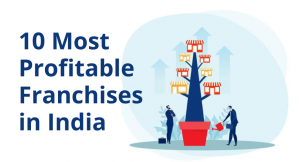Every franchisor wishes to see their firm succeed in several markets. The greater the number of franchises, the higher the brand’s success and returns will be. The establishment of a franchise is only one element of the story. It is necessary to market your franchise appropriately from time to time in order to build your franchise. It is a smart practise to market the brand regularly to recruit franchisees.
Marketing has evolved rapidly. Getting to your target audience has never been easier in today’s society. Marketing has changed the way individuals communicate thanks to technological improvements.
We need define a few crucial phrases before diving into a franchise marketing strategy. The way the franchise as a whole promotes the brand to the public and customers is known as franchise marketing.
- Advertising: To support your image, you must advertise.
- Publicizing: Publicizing is paid advertising that promotes your brand or product.
- Deals advancement: Transactions advancement is a service that makes arrangements to close deals.
- Sales: Advertising targeted towards a specific individual or business is known as sales.
- Individual selling: Individual selling is when a salesperson presents a product to a customer.
The following are the components of a franchise marketing strategy:
Franchise Development Marketing
This type of marketing is used by franchisors to build a business that potential franchisees in new business sectors will need to invest in.
- Create a strong brand that clients will recognise and require in their area.
- Establish trust and validity as a business with which franchisees must collaborate.
- Establish trust and validity as a business with which franchisees must collaborate.
Operational Franchise Marketing
Functional franchise promotion is used by both franchisors and franchisees. To begin, it intends to generate new leads and clients for the company. For this purpose, advertisers use specialised strategies such as Pay-Per-Click (PPC) advertising, local Search Engine Optimization (SEO) campaigns, and detached showcasing systems like as TV commercials. It hopes to keep clients linked so they may make repeat purchases. Advertisers achieve this goal through methods such as email marketing, targeted virtual entertainment crusades, loyalty clubs, and targeted pitches.
It also intends to raise brand awareness so that people feel at ease (and so OK) with the brand. Many organizations focus on advertising, local SEO, informal interchange marketing, local area-based showcasing, and audits, but there are many other approaches to promote brand awareness.
Healthy Google business page
When customers are looking for a local business, they usually begin their search with a Google search. In fact, neighborhood expectations appear in 46% of all Google searches. As a result, it’s critical that your company appears near the top of the list; otherwise, people will have trouble finding you. They’ll probably go for a higher-ranked contender.
Making Google Business Profiles for each of your business locations is probably the most straightforward way to improve your local search rankings. When customers conduct a local search, Google Business Profile postings are typically among the top results. These listings provide a quick overview of your company on the SERP, including its location, operating hours, Google rating, and a call-to-action button. Extra information like as audits, images, headlines, and a link to your organization’s website can be found by clicking into individual postings.
You should include accurate, complete, and supportive data in your Google Business Profile postings to ensure that they rank well in local searches. First and foremost, make sure your addresses, active times, and phone number are current. Furthermore, posting appealing images on your profile might help you tell your company’s story and increase commitment. Finally, you’ll need to set up a thorough audit of the executive’s procedure (to a greater extent toward this next) – your star rating and a few surveys are important positioning parts for your Google Business Profile page.
Manage Your Online Reputation
A reputation management approach should be used to guarantee that your brand’s online presence is reliable and trustworthy. Here are a few quick guidelines for managing your online reputation:
Customers read an average of 10 web-based surveys before trusting a company, thus your online presence can have a major impact on purchasing behaviors. If your image picture does not reach the standard the first time around, people are unlikely to give you another chance. Surveys are also one of the primary positioning elements for Google Business Profiles and other nearby posting sites, as mentioned above.
You should use a standing administration methodology to ensure that your image’s online existence is tenable and reliable. The following are some quick tips for dealing with your online reputation:
- Examine your current surveys to see what people are saying about your company.
- Implement an internet-based auditing strategy and answer each survey honestly and completely.
- Encourage satisfied customers to complete a survey.
- Showcase the web-based entertainment channels for your brand.
- One of the list items for marked terms has its own page.
- Develop a marketing strategy that reflects your brand values.
- To avoid bad surveys, use insights gained from phone conversations.
- Provide great customer service to encourage clients to survey you.
Send Your Audience Local Campaigns Targeted to Their Geographic Region
Customers want personalized experiences as businesses collect large amounts of personal data. When you deliver consistent experiences that spread the word, you’re sure to get their business. Personalization, according to nearly all advertisers, helps improve client interactions, with 78 percent claiming it has a “strong” or “very impressive” impact.
Giving clients adverts tailored to their local franchise location can be very effective for multi-location and franchise marketers. This is due to the fact that customer personas vary by place. People in different geographical regions have distinct issues, and their cultures and idioms might also differ. As a result, targeting everyone with the same value proposition and language might make your message seem inauthentic or tone-deaf.
You should segment your contact list by their “home” area to implement the franchise marketing plan in neighborhood campaigns via email. You can then send out specific email blasts for each location, allowing you to highlight local deals and advancements as well as upcoming events in the area. You can connect your fragmented email list or just use your promotion platform’s geo-focusing on highlights to focus on your crowd with neighborhood search or show ads.
When you follow up on customer feedback, you can quickly address experience concerns in your institution areas before they affect more customers. This will allow you to improve conversion rates, maintain consistent brand insight across all channels, and move past unfavorable reviews on your Google Business Profile and other posting sites.
A well-executed franchise marketing strategy can help your company grow. From finding the perfect franchisee to raising brand visibility and recognition, there’s a lot to consider. Your company may sell its brand to the relevant audience through a variety of ways.




